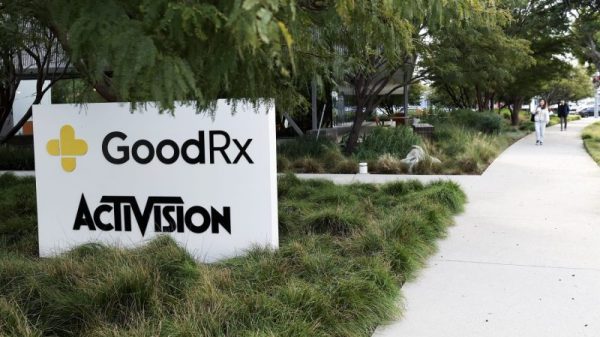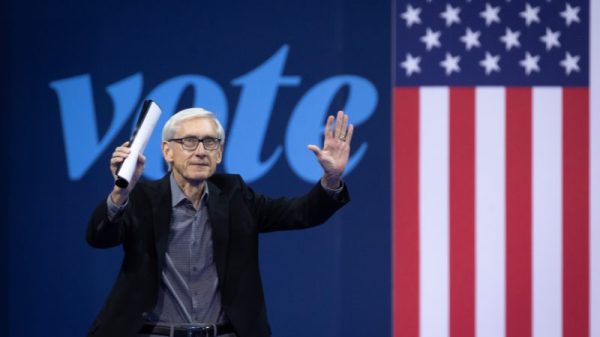
The fragmented and frustrating nature of our current EV charging landscape has been widely — and correctly — cited as one of the most significant barriers to EV adoption. Why buy a plug-in car when every time you plug it in, you have to sign up for another EV charging app, fumble through your payment information, authorize the account, and pray it results in a successful charging experience?
What if you could instead plug in and everything just worked automatically? That’s the goal of a partnership between nonprofit SAE International, a consortium of automakers and EV charging operators, and the Biden administration, which just announced a new framework for “universal Plug and Charge” that will be officially rolled out early next year.
“You just go anywhere you want, boom, you plug in, it accounts for everything in the cloud, charges your card, and you walk away,” said Gabe Klein, executive director of the Joint Office of Energy and Transportation.
“It’s a security solution for EV charging,” added Tim Weisenberger, project manager for emerging technologies standards at SAE International.
The framework aims to deliver a truly seamless and hassle-free charging experience in which every electric vehicle can plug into any public charger without any additional steps required from the vehicle owner.
This was the intention of the official international standard (ISO 15118), also called Plug & Charge, that enables automatic charging and payment as soon as the car is plugged in. In vehicles with Plug & Charge, the charger communicates securely with the vehicle and bills the owner without the need for app signups or additional billing information.
The technology is currently available in dozens of models but hasn’t been embraced universally. Tesla helped originate the Plug & Charge experience by making its Superchargers interoperable with its passenger vehicles from the very beginning. But Tesla is a unique example as both a vehicle manufacturer and EV charging operator.
To adopt Plug & Charge, other automakers need to make individual deals with third-party charging companies to ensure their vehicles can communicate seamlessly with the charging companies’ equipment.
This new framework developed by SAE International and its partners aims to complement and enhance the ISO standard with a universal protocol that is both secure and simplified. This works because the SAE-led effort includes several unique features, including a Certified Trust List to enable secure, automated authentication right at the onset, when the vehicle is plugged in.
“A little bit more robust system would probably be appropriate,” said Sarah Hipel, acting chief technology officer at the Joint Office of Energy and Transportation. “This group… they are focused on that authorization and authentication mechanism specifically, and that is unrelated to the ISO owned 15118-2 standard.”
And the trust list enables roaming, meaning the technology can use multiple PKIs, or Public Key Infrastructure, which describes a collection of tools and procedures that help secure digital communications and transactions. These PKIs can be used interoperably, meaning there can be competition in the marketplace. (The current ISO standard only describes one nonroaming PKI.)
“The trust list is kind of like a big file folder,” Hipel said. “And once you put your anchor in it and it’s been audited — it’s a very rigorous process in order for you to be able to put your anchor in there — but once you put your anchor in there… and they’ve signed their commercial business agreements that they want to access the different routes in the file folder, then you can free roam with anyone.”
Hipel said she expects most manufacturers to use the existing ISO standard for their charging controls and then the PKI mechanism to secure the charge through authorization and authentication.
The framework was an agreement reached between SAE International’s Industry Technologies Consortia, the group’s Electric Vehicle Public Key Infrastructure Consortium, and the Joint Office of Energy and Transportation, which consists of employees of both the US Department of Transportation and the Department of Energy. Members of the SAE consortium include major charging providers, like BP Pulse, ChargePoint, and Electrify America as well as automakers like Ford, General Motors, Tesla, Rivian, Toyota, and BMW. More are expected to join over time.
But ultimately, this is an industry-led project that was initially requested by the automakers and is being funded by them, Weisenberger said. Thus far, the project has cost around $1.5 million, and future funding will be provided by the participating companies.
“Nobody’s free riding,” he added. “Everybody’s involved, working hard. It’s really cool to see that they’re all just in it to make this all work.”
And there will be benefits beyond seamless charging for EV owners, such as secure vehicle-to-grid (V2G) communication and bidirectional charging that will enable EVs to send energy back to the grid to help balance out power loads. This will help create a more resilient grid and should also head off criticism that the current energy system can’t tolerate an all-electric vehicle fleet.
And since it’s been an industry-led project, the participants believe it will survive through the next Trump administration, despite President-elect Donald Trump’s stated goal of rolling back his predecessor’s EV funding projects.
“The ship has sort of sailed, if you will,” Klein said. “And the market dynamics I think have taken over, which is great.”

























